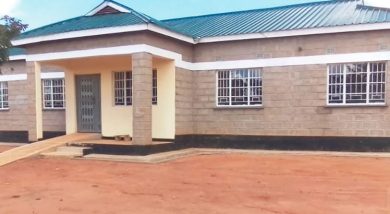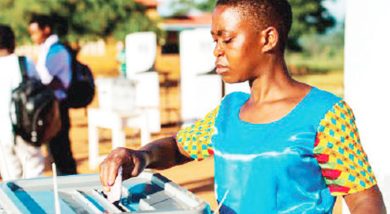External debt scare
Ten years after Malawi got a debt relief, foreign debts are creeping back to unsustainable levels, putting the country at risk of plunging deeper into poverty as more pro-poor resources go to debt servicing.
According to an Annual Review of the Public Debt Portfolio by the Ministry of Finance, Economic Planning and Development, Malawi’s external debts will close the next fiscal year in June 2017 at $1.9 billion.

The projected level of foreign loans is a jump from nearly $1.6 billion as of June 2014 when external debt owed to multilateral and bilateral creditors amounted to $1.129 billion and $423.8 million respectively.
These amounts rose from $965 million for multilateral and $336.3 million in bilateral loans in 2013.
As a result, a significant amount of the budget and foreign currency is shipped out of Malawi to repay the foreign debts when such resources should have been reinvested in the country while shoring up its balance of payment position.
As at the end of June 2014, says the Treasury report, the total debt service which comprises principal repayments and interest amounted to $55.8 million (approximately K40.7 billion at current exchange rate) annually.
That figure is equivalent to the approved budget for the Farm Input Subsidy Programme (Fisp) in the 2015/16 financial year.
While Finance, Economic Planning and Development Minister Goodall Gondwe says people should not be alarmed by the rise in absolute terms, a return to the pre-2006 unsustainable debt levels when Malawi was spending more than $100 million a year in debt repayments, could further narrow the already tight fiscal space.
Malawi reached its Highly Indebted Poor Countries’ Initiative (Hipc) completion point in August 2006 and subsequently qualified for Multilateral Debt Relief Initiative (MDRI).
Consequently, the country’s external debt decreased from $3.4 billion, which was 160 percent of gross domestic product (GDP) at the end of 2005, to only $0.8 billion or 20 percent of GDP by the end of 2006. The external debt is now nearly half of GDP, up by nearly 30 percentage points from the post-Hipc 20 percent.
That sharp reduction in foreign debt cut the external loan service payments in the budget from 3.7 percent of GDP in 2004/05 to 1.5 percent of GDP in 2006/7.

As part of the conditions for debt relief, Hipc resources were ring-fenced for pro-poor spending in areas such as health, education and agriculture, helping to boost growth and reduce, albeit narrowly, poverty levels in the 2006-2010 period.
Alongside fiscal restraint and rapid donor inflows that followed a successful International Monetary Fund (IMF) programme since 2006, external debt relief also helped Malawi to maintain an average fiscal deficit (after grants) of about 2.3 percent of GDP, according to the World Bank.
But with the external debt stock now expected to rise steadily from $553.2 million to almost $1.9 billion in June 2017, these gains have largely been wiped out as Capital Hill’s hunger for expensive Chinese and Indian debt pushes the country back to the brink of an external debt trap that is fast turning into a stress.
According to the Treasury report, of the total bilateral external debt stock of $423.8 million, mainland China accounts for 56 percent (about $237.9 million) while India accounts for 30 percent about ($128.2 million).
But Gondwe says the figures should not scare Malawians because things in the country have improved since 1964 as the borrowing has boosted infrastructure development.
“The country’s infrastructure has improved because of borrowing. In fact, we have done a lot of things due to borrowing, so it cannot be useless,” he said.
Gondwe said the country has not over borrowed since Hipc because by that time the total borrowing as a ratio of GDP was around 160 percent, but is much lower now as a ratio of the national economy.
However, chairperson of the Parliamentary Committee on Budget and Finance, Rhino Chiphiko, says he is worried, especially about the Chinese and Indian loans because government was not transparent on how they were contracted.

“These loans were approved as a blanket by the then Parliament. They were in phases, but up to now government has not come in the open to say how much we have used and how much remains because I am sure interest rates must be very high,” said Chiphiko.
He urged government to slow down on contracting new loans to allow Parliament to scrutinise the current debt portfolio.
He added that his committee does not have information as to when government intends to finish repaying the loans, and is blank on the attached conditions.
According to Chiphiko, some loans did not make sense, citing the borrowing from China to build the Presidential Villas and hotel in Lilongwe.
Said Chiphiko: “Ask government how much is coming from the Presidential Hotel to service the loan. Ask them what it is that Malawians are gaining from the Presidential Villas because at the end of the day it is Malawians, not the infrastructure, who are going to repay the loans through their taxes.”
On his part, Economics Association of Malawi president Henry Kachaje said in interview on Friday that it is worrying that Malawi is quickly returning to the levels of suffocating debts it had prior to Hipc time.
“Our debts were forgiven by our bilateral donors in 2006. However, over the years, we have steadily been increasing our debt, now almost reaching the same crippling levels we had before,” said Kachaje.





